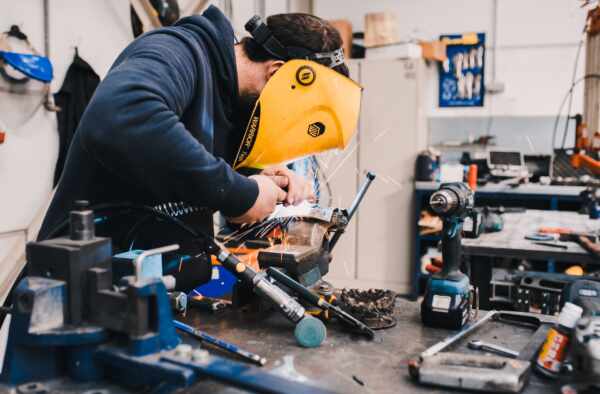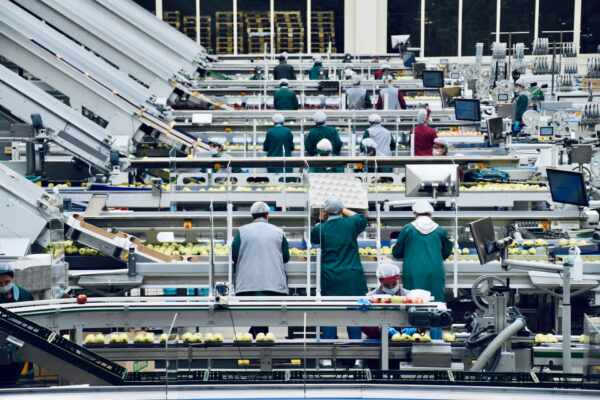In food manufacturing, conveyor belt systems play a vital role in maintaining efficient and hygienic production processes. However, over time, conveyor belts and their components may wear or become damaged, potentially causing disruptions, inefficiencies, and safety hazards.
As a result, facility managers face the critical decision of whether to repair or replace these key components. Making informed decisions can help maximise efficiency, improve food safety, and prolong the life of your conveyor belt system while minimising costs and downtime.
In this article, we will delve into the factors that influence the choice between repairing or replacing conveyor belt systems in food manufacturing operations. Learn how to assess the condition of your conveyor belt components, calculate the costs associated with repair or replacement, and determine the optimal approach to maintain your operation’s efficiency and adherence to food safety standards.
By understanding when to replace or repair your conveyor belt system, you can make strategic decisions that balance cost, performance, and long-term viability.
Assessing the Condition of Your Conveyor Belt System Components
Before deciding whether to repair or replace your conveyor belt system, it is essential to evaluate the condition of its components. By identifying areas of wear and damage, you can make informed decisions that maximise efficiency, safety, and cost-effectiveness. Key components to assess include:
1. Belt Condition: Inspect the belt for signs of wear, such as fraying, splits, or punctures. Pay special attention to the splice area, as this is a common location for belt failure.
2. Pulleys and Rollers: Examine pulleys and rollers for signs of damage, wear, or misalignment. Worn or misaligned components can have a domino effect on the entire conveyor belt system, causing further issues if left unaddressed.
3. Drive Components: Assess the condition of drive components, such as motors, gearboxes, and chains. Failure within these components could lead to costly downtime and damages to other parts of the system.
4. Frame and Support Structures: Inspect the frame and support structures for signs of corrosion, damage, or wear. If damage is found, it may compromise the integrity of the entire conveyor system.
Weighing the Cost of Repair vs. Replacement
When determining whether to repair or replace components within your conveyor belt system, it’s vital to consider the associated costs. Weigh the following factors to make an informed decision:
1. Repair Costs: Evaluate the expense of repairing faulty or worn components. Consider labour, materials, and potential future maintenance costs.
2. Replacement Costs: Estimate the cost of replacing the entire conveyor belt system or sections thereof, considering factors such as materials, labour, transportation, and disposal expenses.
3. Operational Downtime: Factor in the lost revenue and productivity during repair or replacement. Minimising downtime is crucial for maintaining ongoing efficiency in food manufacturing.
4. Long-Term Viability: Analyse the expected lifespan of repaired or replaced components, taking into account factors such as ongoing maintenance requirements, potential obsolescence, and adaptability to future production needs.
Factors Influencing the Decision to Repair or Replace
To make an informed decision between repairing or replacing conveyor belt system components, consider the following factors:
1. Age of the System: Older conveyor belt systems may have outdated components or materials, making repairs less cost-effective and warranting an upgrade.
2. Component Compatibility: When repair is the chosen path, ensure compatibility between the existing conveyor belt system and replacement parts, avoiding potential issues caused by mismatched components.
3. Food Safety Compliance: Ensuring hygiene and food safety compliance may necessitate the replacement of failing conveyor belt systems to align with industry regulations.
4. Efficiency Gains: Upgrading to a new conveyor belt system may offer efficiency gains through advanced technology, better materials, or improved design features.
Implementing a Conveyor Belt System Maintenance Plan
To ensure the optimal performance of your conveyor belt system, consider implementing a conveyor belt maintenance plan that includes:
1. Regular Inspections: Conduct routine inspections to identify potential issues early, minimising cost and impact on ongoing operations.
2. Cleaning and Sanitation: Establish a strict cleaning schedule, ensuring the conveyor belt system is hygienic and compliant with food safety standards.
3. Timely Repairs: Address wear or damage promptly, preventing minor issues from escalating into more serious problems.
4. Continuous Improvement: Monitor the performance of your conveyor belt system and strive for ongoing improvement, adapting to changing production needs and industry advancements.
Conclusion
The decision to repair or replace conveyor belt system components in food manufacturing operations is critical for maintaining efficiency, safety, and cost-effectiveness. By assessing the condition of your conveyor belt system components, weighing the costs associated with repair or replacement, and considering key factors that influence decision-making, you can make strategic choices that optimise the longevity and performance of your system.
Incorporating a conveyor belt system maintenance plan will further enhance the value of your investment, safeguarding your reputation and success in the competitive food manufacturing landscape.
Confidently address the repair or replacement needs of your food manufacturing conveyor belt system with the support of Change Parts Pty Ltd. Our expert team will work closely with you to determine the most efficient and cost-effective solutions for your operation.




